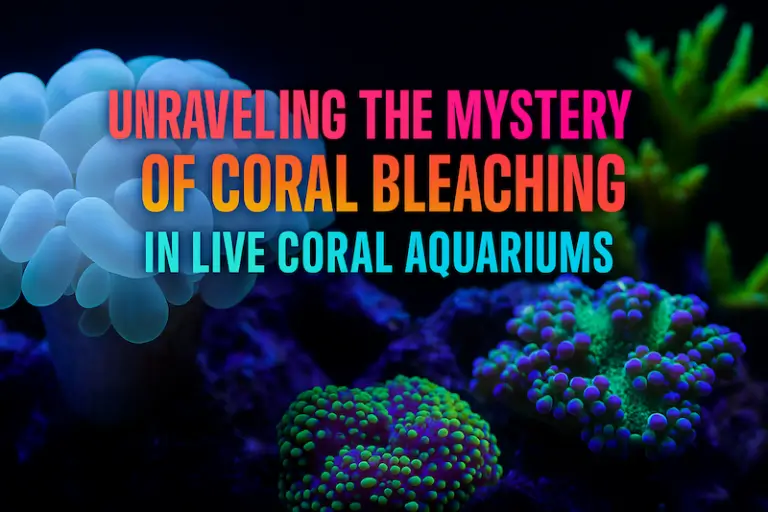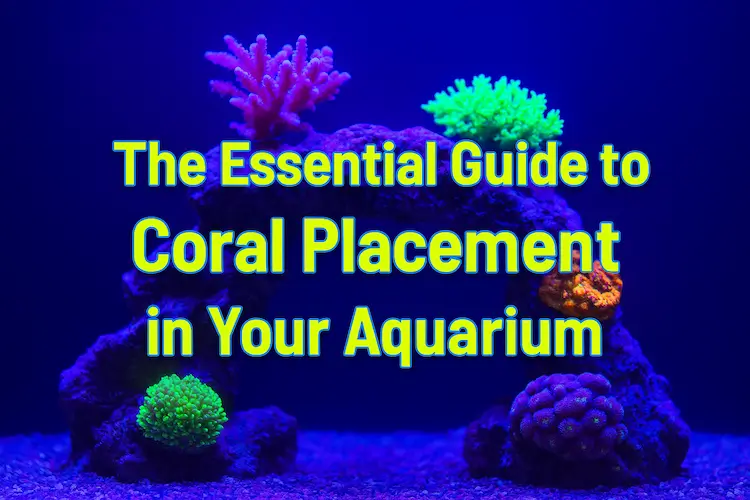The Ultimate Guide to Vibrant Corals Part 2 Illuminating Insights:
Mastering Coral Lighting
Welcome back to our ten-part series, “The Ultimate Guide to Vibrant Corals.” In this instalment, we’ll dive into the fascinating world of lighting and its profound impact on coral colouration. Lighting is not only essential for the health of your corals but also plays a crucial role in bringing out their vibrant hues. Let’s shed some light on how to master coral lighting for stunning results in your reef aquarium.
Understanding Coral Lighting Needs
Coral reefs thrive under specific lighting conditions that mimic their natural habitat. Different coral species have varying lighting requirements based on their depth in the ocean and the type of symbiotic algae they host. Understanding these needs is essential for providing the right lighting environment in your aquarium.
Intensity and Spectrum: Finding the Perfect Balance
The intensity and spectrum of light are two key factors that influence coral colouration.
• Intensity: Corals require sufficient light intensity for photosynthesis, which provides them with energy. However, too much intensity can lead to photoinhibition and damage to the corals’ tissues. Finding the optimal intensity for your corals depends on factors such as their placement in the aquarium and the depth of the tank.
• Spectrum: Different wavelengths of light penetrate water to varying degrees. Blue and violet light penetrate the deepest, making them essential for corals’ photosynthesis and colouration. Additionally, certain wavelengths, such as red and green, contribute to specific pigment production in corals, enhancing their overall colouration.
The Benefits of Specific Spectra
• Blue Light: Blue light is crucial for photosynthesis and the production of chlorophyll in symbiotic algae (zooxanthellae) living within coral tissues. It promotes healthy growth, enhances fluorescent pigments, and intensifies blue and green colours in corals.
• UV Light: Ultraviolet (UV) light, particularly UV-A and UV-B wavelengths, stimulates the production of protective compounds in corals, such as mycosporine-like amino acids (MAAs). These compounds act as sunscreen, shielding corals from harmful UV radiation and reducing the risk of coral bleaching.
• Red Light: Red light penetrates deeper into the water and promotes the growth of photosynthetic algae within coral tissues. It enhances the production of red and orange pigments in corals, adding warmth and depth to their colouration.
• Green Light: Green light contributes to the overall photosynthetic process in corals and enhances the production of green pigments. It helps balance the light spectrum and provides a natural, aesthetically pleasing appearance to the aquarium.
Choosing the Right Lighting Equipment
Selecting the right lighting equipment is crucial for providing your corals with the ideal light spectrum and intensity. LED lights have become increasingly popular among reef hobbyists due to their energy efficiency, customisable spectrum, and controllability. When choosing LED fixtures, look for models that offer a wide spectrum range, adjustable intensity, and programmable settings to mimic natural lighting cycles.
Photoperiod: Mimicking Natural Lighting Cycles
Just like in nature, corals thrive on consistent lighting cycles that include periods of light and darkness. Mimicking natural photoperiods in your aquarium helps regulate coral metabolism and behaviour, promoting healthy growth and colouration. Aim for a lighting schedule of 10-12 hours of light followed by 10-12 hours of darkness each day, adjusted to suit the specific needs of your corals.
Acclimating Corals to New Lighting
When introducing corals to a new lighting setup or making significant changes to your existing lighting, it’s essential to acclimate them gradually. Start by reducing the intensity and duration of lighting to minimise stress on the corals. Monitor their response closely and gradually increase the lighting over several weeks until they acclimate to the new conditions.
Conclusion
In Part 2 of “The Ultimate Guide to Vibrant Corals,” we’ve explored the crucial role of lighting in coral colouration. By understanding the intensity, spectrum, and photoperiod requirements of your corals, you can create an optimal lighting environment that promotes vibrant hues and healthy growth. In the next installment, “Part 3: Feeding Finesse – Nourishing Your Coral Beauties,” we’ll delve into the dietary needs of corals and how feeding habits can impact their colouration.
Stay tuned as we continue our journey to unlock the secrets of vibrant corals in your aquarium!
Stay tuned for Part 3 of the series, “Feeding Finesse – Nourishing Your Coral Beauties,” where we’ll explore the dietary needs of corals and their impact on colouration.








